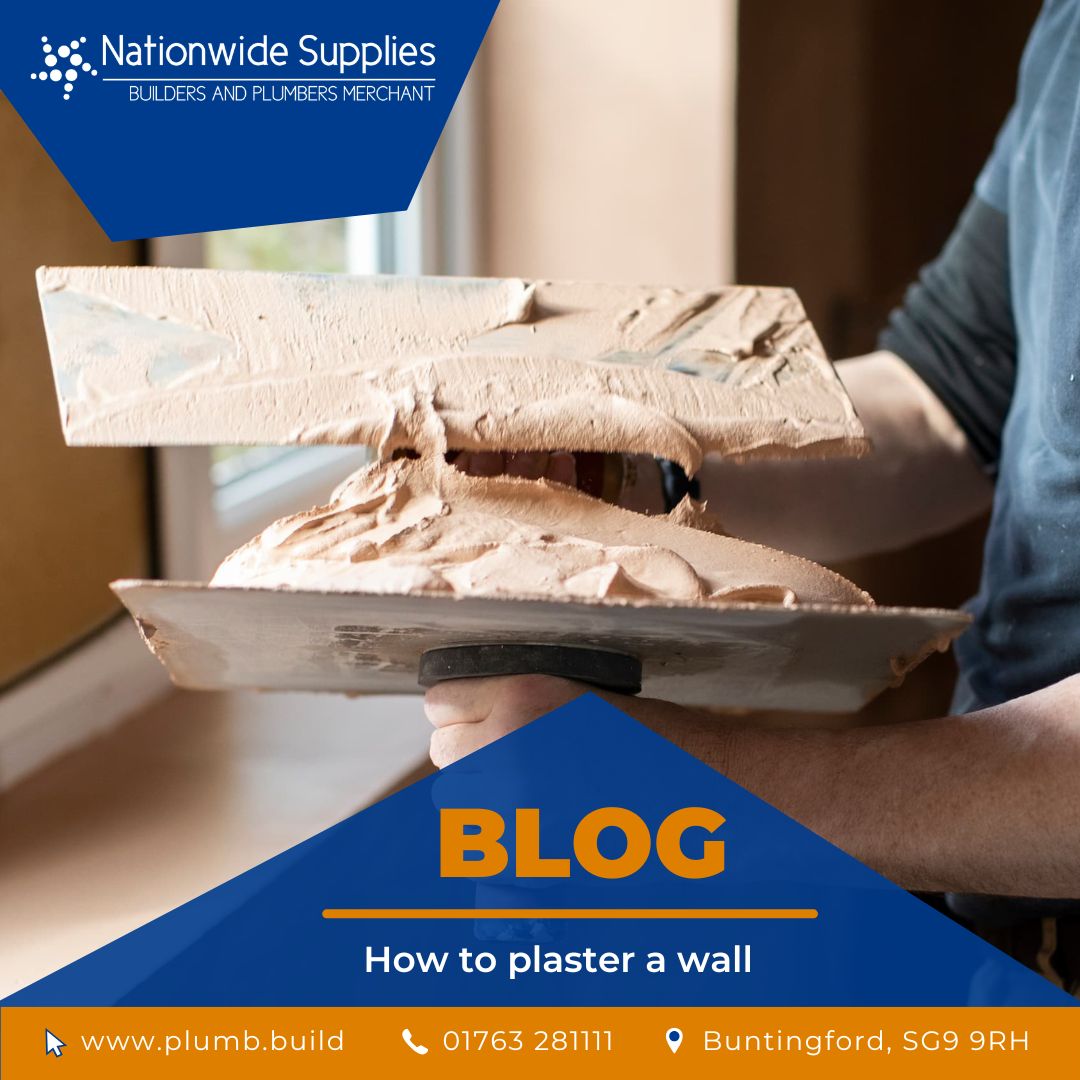Posted: 10th June 2025 | Author: Jamie Brown | Category: Plastering
Back to news
Plastering is a vital skill in both professional construction and home improvement projects. Whether you're a tradesperson looking to refresh your technique or a DIY enthusiast tackling a renovation, knowing how to plaster a wall properly ensures a smooth, durable finish that’s ready for painting or decorating.
In this step-by-step guide, we’ll walk you through everything you need to know so you can confidently plaster a wall with gypsum plaster. Keep reading to learn more.
To get started with a plastering project, the first step is to make sure you have all the tools, equipment and materials you need in order to get the job done. These include:
In order to protect both you and the environment in which you’re working, you’ll also need:
Begin by laying out your dust sheets to ensure that all floors, windows and other surfaces within the room are protected. Tape over all sockets, vents and similar openings. Where possible, the room should be cleared before plastering.
Then, check that the wall is ready to be plastered. There should be no trace of loose paint, wallpaper or old plaster, and any cracks should be filled and sanded smooth. Ensure that the wall is clean and dry. If you’re plastering onto new plasterboard, ensure all joints are sealed with jointing tape.
Put on your personal protective gear, such as gloves and eye protection.
Dilute your PVA glue according to the manufacturer’s instructions - usually 1:4 glue to water. Use your roller to apply an even coat of this solution to the wall you’re going to plaster. This is to help the plaster stick to the wall surface. Allow it to become tacky but not fully dry before plastering.
Referring to the instructions on your plaster, combine the plaster dust with water. Always add plaster dust to a bowl of clean water and not the other way around, as this helps to avoid getting lumps in the mixture. Mix as you add the plaster. Aim for a smooth consistency without any lumps, similar to mud or thick custard.
If this is a one-off job or repair, you might find it most cost-effective to use a paddle to mix your plaster by hand. For tradespeople or those looking to do a lot of plastering, though, an electric mixer used at low speed will get the job done much faster.
After mixing, clean the plaster off your mixer while it’s still wet. It’s much harder to get off once it has had time to dry and set.
Use your trowel to load some plaster onto your hawk board - think of it almost like a painter’s palette. If you’re new to plastering, only use small amounts at a time while you get used to using the tools.
Then, using your float, apply a thin, even layer of plaster to the wall, aiming for a thickness of roughly 2mm. Start with the bottom left corner of the wall and work your way up and across to cover the whole wall.
Try to do this as quickly as possible so that the whole wall is roughly at the same stage of drying. Don’t worry too much about leaving marks in the plaster with your float as you’ll have the chance to smooth these out later.
Wait 20 minutes to allow the first coat time to partially dry. Then go over it again with your float to smooth out any lumps, bumps or gaps.
Top tip! Spritzing the plaster with a spray bottle can help to moisten areas where needed to make them easier to smooth out. A wet paint brush can be similarly handy for corners and edges.
Mix a fresh batch of plaster according to the manufacturer’s instructions - a second coat will usually be thinner than the first.
Then, apply it using the same methods detailed in Step 4. Give it another 20 minutes to start setting, then smooth the second coat out as instructed in Step 5.
Allow the plaster plenty of time to dry out completely. This can take anywhere from 24 to 48 hours depending on the environmental conditions. If you’re not sure it’s dry, leave it longer to be safe.
Once you’re happy the plaster is dry, use your sandpaper to lightly sand off any rough areas. Then your wall should be ready to decorate with paint or wallpaper as desired.
Plastering a ceiling involves the same basic techniques as plastering a wall, but the job naturally comes with added challenges, particularly for the DIY plasterer.
The most obvious difference is the overhead position, which makes the work more physically demanding and increases the risk of plaster falling. To counter this, work in smaller sections and use slightly thicker plaster to help improve control and adhesion. Ceilings also tend to have more imperfections or sagging areas, so it's crucial to ensure the surface is secure and properly bonded with PVA beforehand.
When plastering a ceiling, safety is the most important consideration. Always use a stable platform or scaffold rather than attempting the job with a stepladder. You should also use more protective gear.
Our advice? Leave ceiling plastering to the professionals unless you’re 100% confident in your ability. While DIY is fun and can be a great way to save money on home improvements and repairs, some jobs require technical skill and training - and the saved money isn’t worth the risk of injury.
Whether you’re a seasoned professional looking for a refresher, a trainee learning on the job or a DIYer who wants to expand their skills, plastering is a job that, with a little care and attention, many can get the hang of.
Back to news
The Author: Jamie Brown
From my early working life as a labourer, then becoming a builder and a property developer, I have been buying and using building materials for over 25 years. I set about to start a builders merchant which can offer high-quality products and significant savings along with speedy delivery to keep your sites moving. Still having a foot in the construction industry on my own property, I always make sure the products we sell are up to our high standards which is important for us to keep a great image for the company and superior reputation to supply quality!